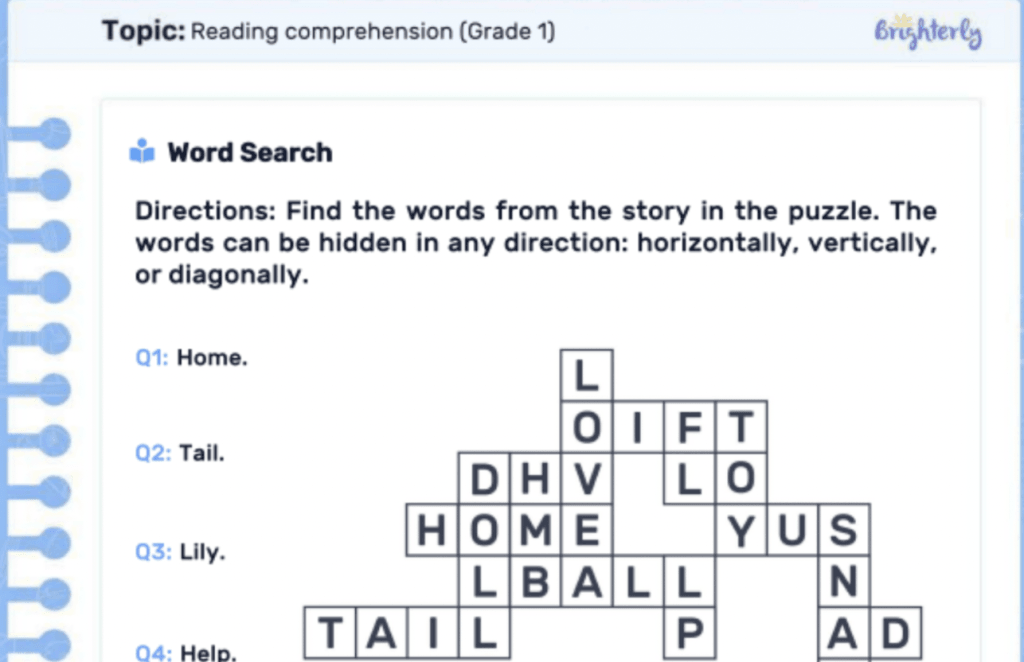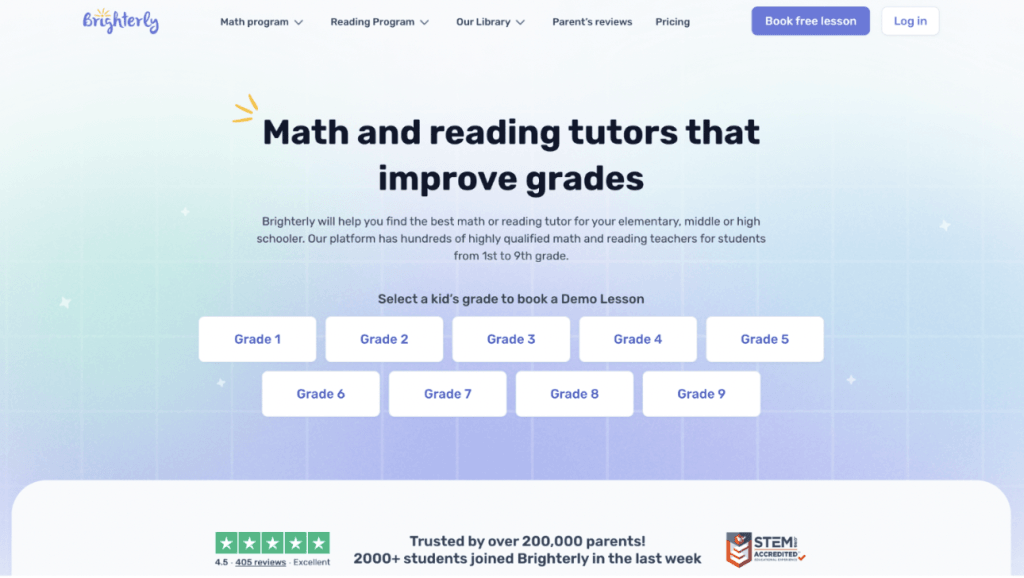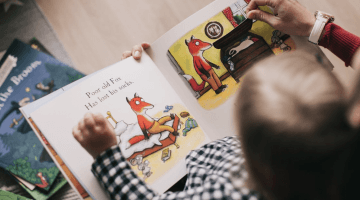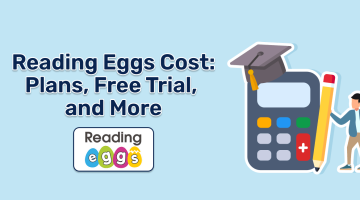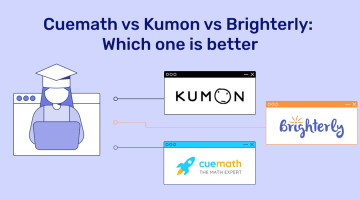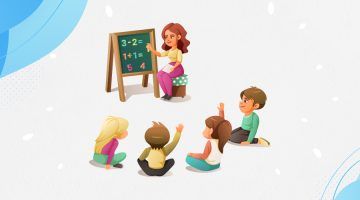How to Teach Phonics at Home? Tips for Parents
reviewed by Marvi M. Andres
Updated on September 18, 2025
When kids, especially in kindergarten and first to second grades, struggle to read, parents often worry — and that is completely normal. I’m a professional ELA tutor, and in this post, I’ll share my top 5 simple, effective tips on how to get better at ELA.
Key Points
- Teaching phonics at home requires consistent practice, gamified learning integration, and connecting reading to real life.
- When teaching phonics, it’s essential to focus on Common Core standards and the principles of the Science of Reading.
- Brighterly is a reading platform for K-12 US students that can help your child learn phonics fast and effectively.
What is the best method to teach phonics?
The best way to teach phonics at home involves using a systematic approach and focusing on letter-sound relationships, blending, and decoding skills. Daily practice, reading aloud with your child, consistent parental guidance, and learning with professional tutors are the four pillars of effective teaching phonics at home.
How to teach your child phonics at home?
- Practice phonics with worksheets
- Read aloud together
- Hire professional reading tutors
- Involve phonics practice via writing
- Use letter-sound games
Teach phonics at home through worksheets
Best for: 5–8 years old
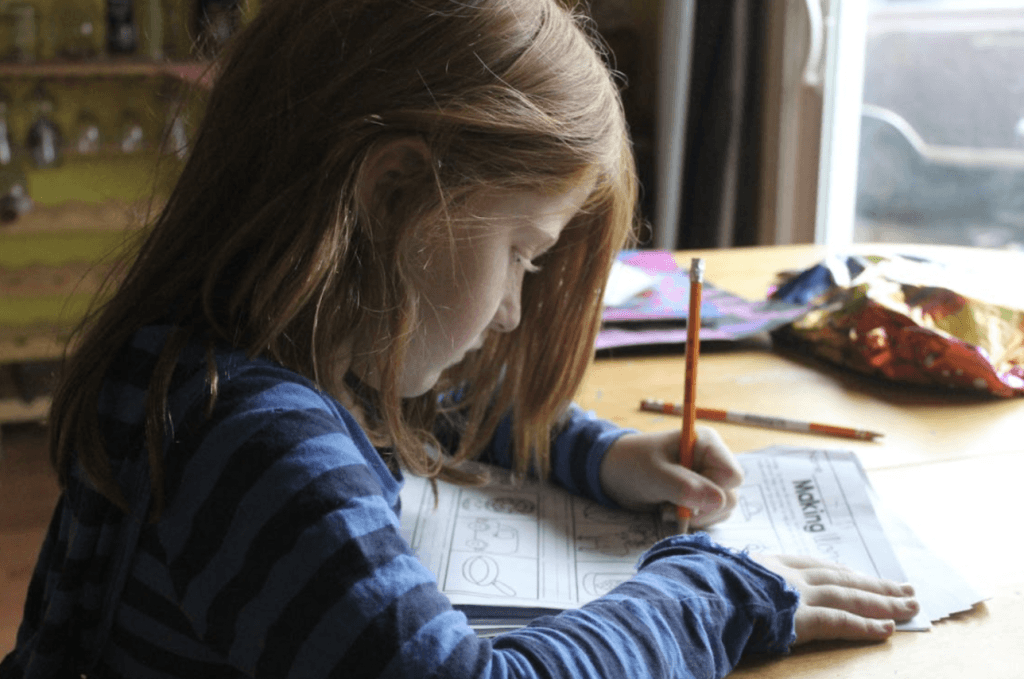
Phonics worksheets are designed to provide structured support with letter-sound recognition, blending, decoding skills, sight words, and phonemic awareness. They often include fun phonics activities like matching letters to sound, filling in missing letters, and simple exercises like word-building.
I always recommend engaging kids in this type of phonics practice on the daily basis, especially when they fall behind or shy away from reading, to avoid creating significant learning gaps in the future.
Teaching phonics at home for free with Brighterly worksheets
If you’re a parent looking for free resources for your little one to practice phonics, Brighterly is what you need. The team behind this platform has curated hundreds of reading worksheets — resources for teaching phonics at home — for various levels and grades (for solo practice or with a tutor!). The best part is that they are available to everybody, and you can get them without entering a credit card or creating an account — an optimal solution for parents on a budget in need of high-quality reading resources.
Brighterly phonic worksheets are designed by the platform’s top educators and offer real-world examples and step-by-step practice exercises to make reading more relatable.
Finally, the reading worksheets aren’t the only resource Brighterly offers. You can also check your child’s reading skills through a free reading test — it only takes a couple of minutes to complete, but will promptly assess knowledge gaps and strengths.
Phonics activities at home: Reading aloud together
Best for: 5–8 years old
Reading aloud is a fun activity that helps connect spoken and written words. When reading with your child, you can pause to point out letter sounds, blend simple words, and ask questions about the story. Reading aloud phonics at home activities make the overall reading practice interactive and enjoyable — there are no boring drills or exercises, just an interesting story. Reading aloud also strengthens vocabulary and builds real reading confidence, plus it’s a perfect tuck-in activity!
How to teach phonics with reading aloud
- Teach correct sounds: when you’re reading together, emphasize the sounds of letters to help your child hear how words are formed.
- Pause if needed: pause to pinpoint key words and ask your kid to identify specific sounds and letters.
- Blend-blend-blend: slowly blend sounds to read simple words in the text.
Note: According to the National Reading Panel, children develop stronger decoding and comprehension skills when reading aloud.
Phonics activities at home with a professional reading tutor
Best for: Any age; children who need targeted support in reading by an expert ELA tutor.
Professional ELA tutors use proven, research-based methods to teach kids phonics or any other area of reading. They also track progress and adjust strategies when needed, not only to improve skills but also to build kids’ confidence and boost motivation to read and write.
How to teach phonics at home with a professional tutor?
- Tutors use personalized lessons: when teaching phonics activities, professional tutors adapt their teaching techniques to the needs of their students, ensuring targeted support where it’s most needed.
- Gamified instruction: often, tutors use gamified approaches that can boost interest in learning the English language — children practice letter sounds, blending, and decoding in a fun and engaging way.
- Science-based curriculum: online educational platforms like Brighterly use curriculum that is 100% adapted to the Common Core and the Science of Reading standards, so your child is always on the same page with the school curriculum.
- What is Brighterly?
Brighterly is a one-on-one math and reading tutoring platform connecting K-12 students with expert tutors. The platform becomes more and more popular every year, with 200K parents entrusting their child’s learning to the site, with an average TrustPilot satisfaction score of 4.5 stars.
I can strongly recommend Brighterly if you’re looking for a research-based supplementary learning platform. Here’s how it works: a reading tutor assesses each student’s reading level, and the program is then adapted to the student’s grade, requirements, and learning goals in accordance with the Science of Reading and Common Core standards.
Brighterly also has an affordable price starting at $17.30 per lesson, if you choose the extended 12-month plan with three lessons per week. In contrast, the standard tutoring rate in the USA is between $40 and $80, so the price can rise to $300 a month (one session a week), making Brighterly one of the most affordable options on the market.
Note: Children who receive structured phonics tutoring early are twice as likely to reach grade-level reading proficiency by the 3rd grade, per to the National Reading Technical Assistance Center.
Writing as free phonics activities
Best for: 5–9 years old

Writing activities are the best form of phonics practice when you want to help children learn how to connect letters and syllables with vowel and consonant sounds, plus teach them spelling rules. Encourage your child to practice writing letters, simple words, and shorter sentences, and say the sounds aloud. This activity strengthens decoding, phonological skills, spelling, and reading fluency, all with minimal materials and tools.
How to teach kids phonics at home through writing
- Building better letter-sound connections: encourage your kid to write letters while saying the corresponding sounds aloud.
- Compose simple words into sentences: have your child write short words and sentences, blending sounds as they go.
- Make it fun and interactive: writing can be boring — make it fun instead! Turn writing into word hunts, spelling games, or labeling items around the house, and don’t forget to add rewards!
Note: Multisensory learning, like writing while saying sounds aloud, strengthens decoding, spelling, and reading fluency, according to the National Reading Panel.
Letter-sound games as phonics activities for parents to do at home
Best for: 5–8 years old
Letter-sound games are most effective for pre-K and kindergarten, but they can also make learning phonics easier for elementary kids! Parents, educators, and guardians can play matching games, memory cards, or scavenger hunts.
I love to use it in my practice — it’s an excellent phonics activity to boost letter recognition, decoding, and phonemic awareness. Plus, it’s different from traditional learning, keeping kids engaged and focused. Say bye to screen time!
Letter-sound games as phonics activities at home
When your child is learning the alphabet, it’s important to have them see examples of how letters are used in the real world. Fun games are an excellent opportunity to do this. Here are some easy phonics games to play at home:
Scavenger hunt (but with phonics!)
Let’s say your kid learns the sound “ch”. Have them look for it in books, magazines, on billboards, and on signs. Imagine how much fun it would be for your little one when you’re in traffic or waiting in line at the supermarket. More complex patterns require them to look for whole words with that pattern.
Finally, make a reward system — set a specific number of words your child has to find with a specific letter or a sound. Make it challenging but not overwhelming, after all, it’s just a game.
Treasure hunt
One of the other examples of phonics activities is a treasure hunt. For this game, you’ll need some index cards featuring alphabet letters or words on them. Hide the cards around your house and have your kid look for them. Once they find a card, ask them to say the letter or sound or read the whole word aloud. Again, add a reward system for every letter, sound, or word.
“Say the first letter” game
This is one of the easiest activities for teaching phonics that will come in handy with kids under 6. Grab your child’s favorite toys and objects and stack them on the table. Encourage them to select any toy or object at a time and say the first sound or letter in the words. Write the letter on a piece of paper if your kid is ready for this.
How to integrate phonics practice for homeschooled kids?
- Create a daily routine: short, consistent phonics sessions are a must.
- Blend learning with everyday life: read aloud before bed, play games, and spot letters when out of the house.
- Track progress: Use online assessments, like Brighterly reading tests, to track progress.
Is your kid homeschooling? Besides reading programs, Brighterly offers homeschool math — let your kid be confident in numbers as well as in letters.
Note: According to the Homeschooling Statistics 2025, 3.7 million children in the United States in 2025 are homeschooling, either partially or fully.
Conclusion: How to teach your child phonics at home?
Pre-K, kindergarten, and elementary children often need support in phonics, and parents are unsure how to help them effectively. Yet, teaching phonics at home can be easy and requires consistent practice, gamified learning integration, and connecting reading to real life.
Brighterly reading program will help your child learn phonics in no time, offering features like
- Interactive letter-sound games
- Progress tracking
- Personalized curriculum
- And gamified learning approaches that kids love so much!
Start improving your child’s phonics today — book reading class!


